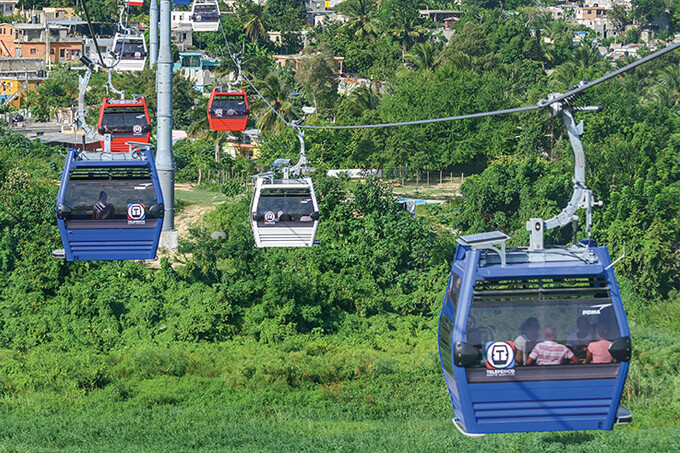Con la puesta en funcionamiento del teleférico de Santo Domingo, la capital dominicana se ha unido a las ciudades latinoamericanas que han optado por el sistema de cable aéreo para el transporte masivo, garantizando el acceso a sectores marginados y favoreciendo la integración social en el Gran Santo Domingo. Además de alojar la plataforma electromecánica y resolver las funciones propias de una infraestructura de transporte, también cumplen una función estética, ya que el diseño de las cuatro estaciones: Gualey, Los Tres Brazos, Sabana Perdida y Charles de Gaulle se destaca por su estética actual –volúmenes puros con un lenguaje formal contemporáneo– y emplazamientos de ordenada geometría que contrastan con el paisaje urbano circundante caracterizado por la informalidad de sus construcciones y la contaminación visual.
La obra del teleférico incluyó la construcción de cuatro estaciones (con intervención en sus entornos), el montaje del sistema electromecánico con cinco plataformas, 36 torres de apoyo o pilonas y el montaje del cable portante tractor. La justificación del proyecto estuvo determinada por la necesidad de una solución de movilidad integral segura y digna para más de 287,000 ciudadanos del Distrito Nacional y de los municipios de Santo Domingo Este y Santo Domingo Norte.
El sistema de cable aéreo brinda una solución factible para la interconexión de las comunidades marginadas del Gran Santo Domingo –especialmente los barrios que atraviesa, que son Gualey, Los Tres Brazos y Sabana Perdida–, favorece la transformación urbana de los sectores de las márgenes de la cuenca del río Ozama y genera cohesión social a escala metropolitana. Por otro lado, la integración física y tarifaria con el metro de Santo Domingo y sus rutas alimentadoras representa un modelo de gestión sostenible desde un punto de vista social, económico y ambiental, con el que se estima un ahorro de tiempo y dinero para los usuarios de aproximadamente un 30%.




